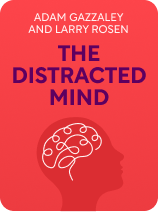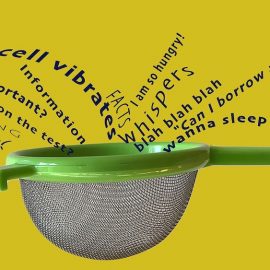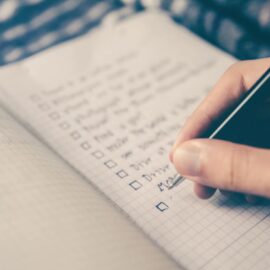

This article is an excerpt from the Shortform book guide to "The Distracted Mind" by Adam Gazzaley and Larry Rosen. Shortform has the world's best summaries and analyses of books you should be reading.
Like this article? Sign up for a free trial here.
Do you get distracted by technology easily? How can you reduce technology use?
In their 2017 book The Distracted Mind, Adam Gazzaley and Larry D. Rosen say that technology is one of the biggest distractions today. By changing your environment, you can reduce your use of technology and stay focused on whatever task you have at hand.
Here’s how to reduce technology use to stay concentrated.
Change Your Environment
Although Gazzaley and Rosen are optimistic that we can become more resistant to interference and distractions by improving our cognitive control, they argue that we can also combat interference and learn how to reduce technology use by addressing the root causes—increased accessibility of information as well as increased anxiety and boredom when focusing on one information source.
Change #1: Take Steps to Reduce Accessibility
First, Gazzaley and Rosen argue that we should take concrete steps to reduce our access to external sources of information—especially our smartphones. Of course, they point out that limiting accessibility will look different depending on the task at hand; when driving a car, for example, you can simply put your phone in the backseat, but this isn’t an option when you’re at work.
Nonetheless, they point out that limiting access is possible in most circumstances. For instance, they recommend closing unnecessary tabs when working on your laptop and creating “tech-free” zones when socializing with friends or family. In doing so, you can artificially restrict access to information that leads to increased interference.
(Shortform note: In a separate discussion of The Distracted Mind, Rosen offers another simple but effective tip for reducing our smartphone usage: Turn off your push notifications if at all possible. Although, strictly speaking, this strategy doesn’t reduce your access to your phone, it does reduce the number of external interruptions that you’re subjected to each day.)
Change #2: Take Steps to Reduce Boredom
Next, Gazzaley and Rosen contend that taking active steps to reduce boredom in situations prone to interference can help us minimize interruptions and distractions. Once again, they point out that the exact process of reducing boredom will look different depending on the task at hand. However, one frequent activity that they endorse to reduce boredom is simply listening to music—whether while working or studying. In both cases, studies have shown that listening to music can increase cognitive performance without being especially distracting.
(Shortform note: Boredom is especially endemic within the workplace, with one survey of 382 US office workers reporting being bored for above 10 hours per week. To that end, experts recommend a variety of additional steps specifically geared toward combating workplace boredom. For example, you can try altering your workplace environment so that it feels stimulating rather than dull. Alternatively, set daily goals that you can work toward to improve your motivation. And if you do try listening to music, experts recommend instrumental music when you need to focus and music with lyrics when you’re tackling more mindless tasks.)
Change #3: Take Steps to Reduce Anxiety
Finally, Gazzaley and Rosen argue that finding ways to decrease the anxiety we feel when apart from technology helps us combat interference. In particular, they have one clear recommendation for alleviating technology-induced anxiety in all domains: Set boundaries with your contacts about when you will and won’t be available.
In defense of this approach, they argue that the root cause of most anxiety that we feel when apart from our devices is our concern about missing a text, an email, or an instant message. After all, technology has led us to expect 24/7 availability and instant responses, leading to anxiety when we aren’t available 24/7 and responding instantly. So, by setting boundaries and letting contacts know that we won’t be available during—say—work, school, or mealtimes, we won’t worry about not meeting others’ expectations, making us less anxious.
(Shortform note: Though setting boundaries can be effective in reducing the pressure to be constantly available, some countries’ legislatures have decided this burden shouldn’t fall on workers alone. Countries like Belgium and Portugal have introduced laws prohibiting work-related emails, phone calls, or texts after work hours, recognizing the stress and strain that workers are under when they can’t disconnect. So, institutional changes might also play a role in changing the societal expectations to be always available.)

———End of Preview———
Like what you just read? Read the rest of the world's best book summary and analysis of Adam Gazzaley and Larry Rosen's "The Distracted Mind" at Shortform.
Here's what you'll find in our full The Distracted Mind summary:
- How technology has made us more prone to distractions and interruptions
- How to modify your environment to reduce distractions and boredom
- How to minimize your susceptibility to interference and improve cognitive control






